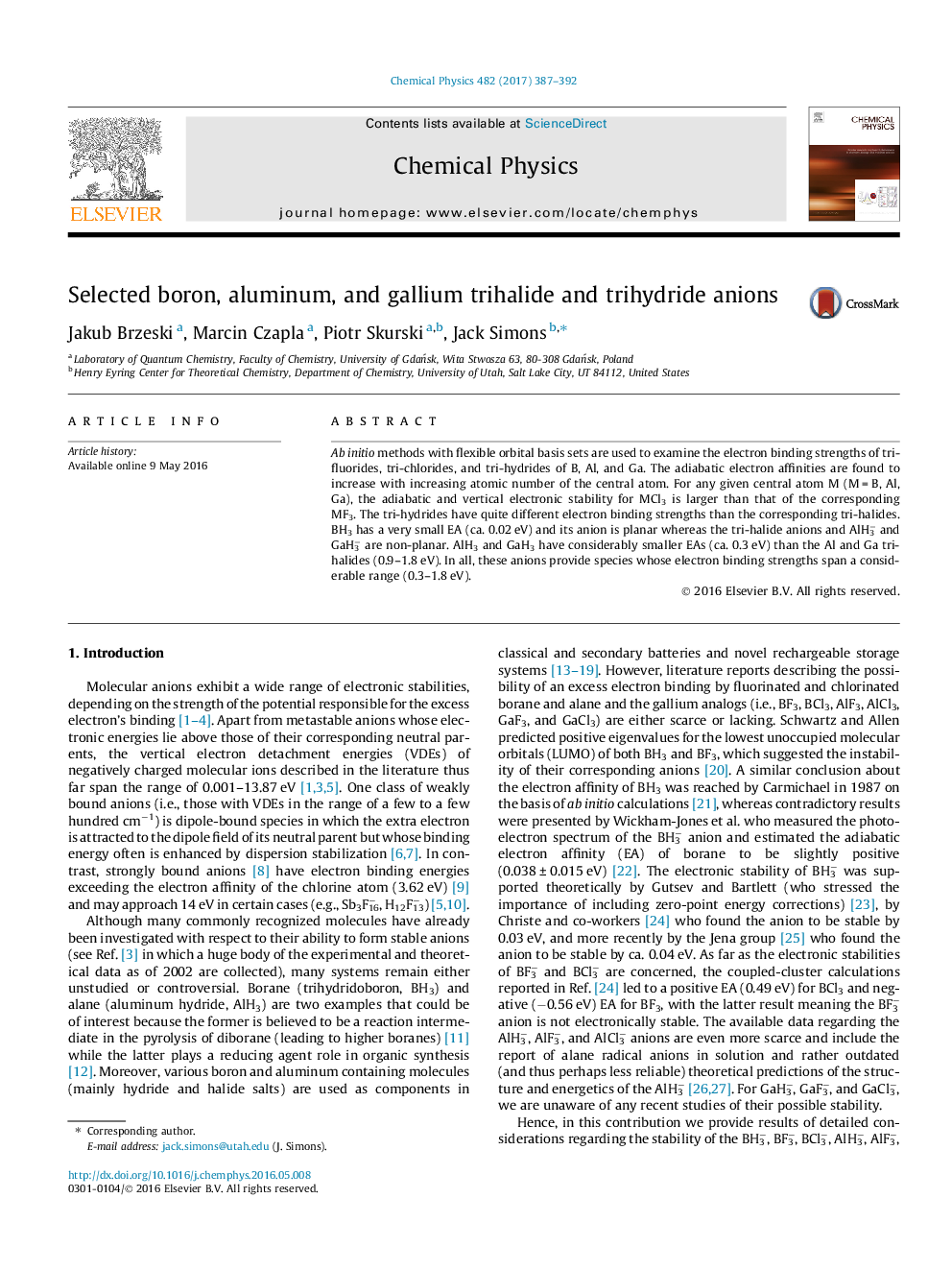| Article ID | Journal | Published Year | Pages | File Type |
|---|---|---|---|---|
| 5372815 | Chemical Physics | 2017 | 6 Pages |
Ab initio methods with flexible orbital basis sets are used to examine the electron binding strengths of tri-fluorides, tri-chlorides, and tri-hydrides of B, Al, and Ga. The adiabatic electron affinities are found to increase with increasing atomic number of the central atom. For any given central atom M (MÂ =Â B, Al, Ga), the adiabatic and vertical electronic stability for MCl3 is larger than that of the corresponding MF3. The tri-hydrides have quite different electron binding strengths than the corresponding tri-halides. BH3 has a very small EA (ca. 0.02Â eV) and its anion is planar whereas the tri-halide anions and AlH3â and GaH3â are non-planar. AlH3 and GaH3 have considerably smaller EAs (ca. 0.3Â eV) than the Al and Ga tri-halides (0.9-1.8Â eV). In all, these anions provide species whose electron binding strengths span a considerable range (0.3-1.8Â eV).
Graphical abstractEnergies of AlF3 and AlF3â as functions of the distortion away from planarity.Download high-res image (60KB)Download full-size image
